Photos by Ellen Kenny from the soggy Merrimack River floodplain
- Tags:
- Wildlife
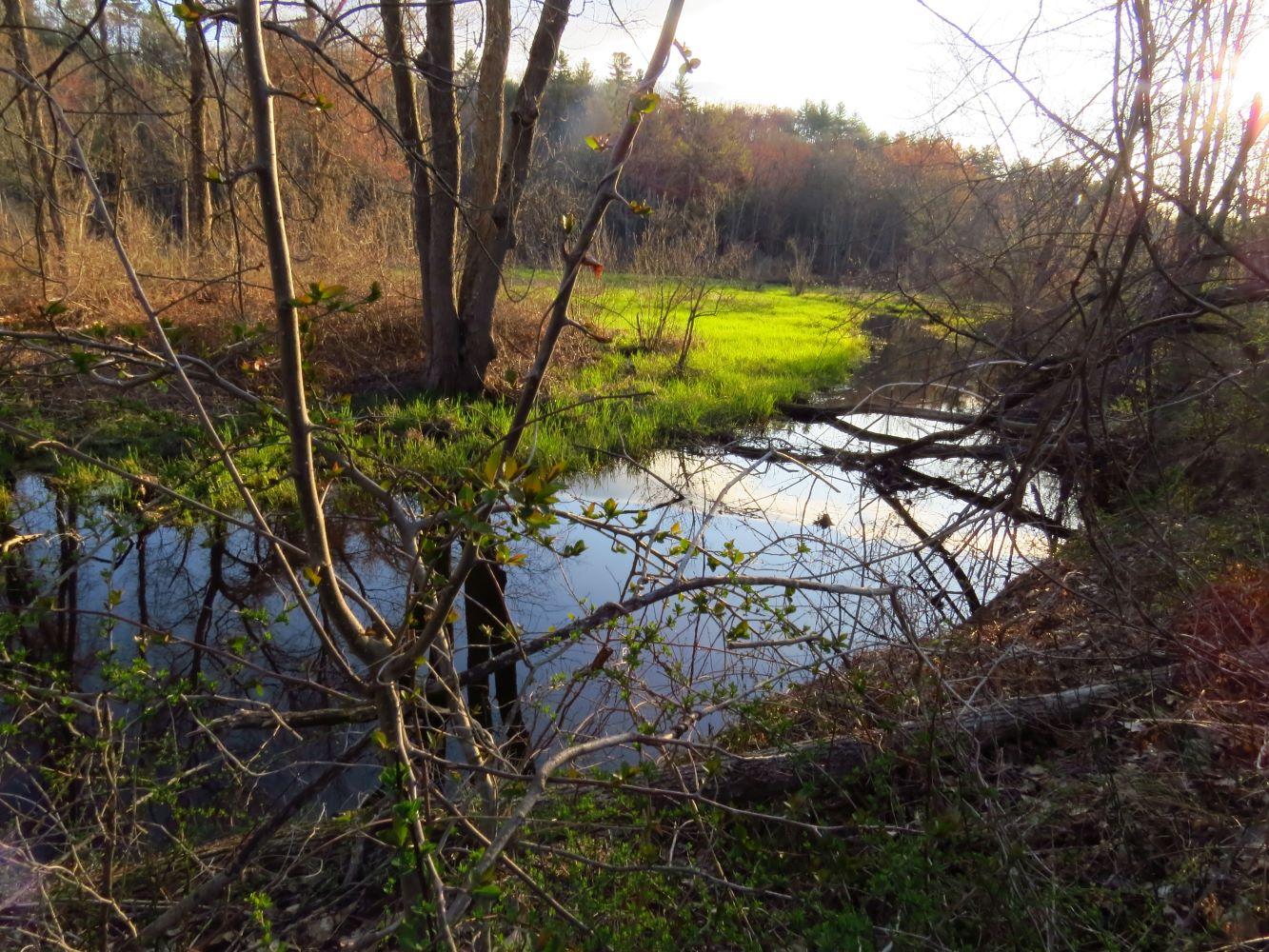
Mill Brook in April. Photo Ellen Kenny
The April wildlife photos arrived in an email entitled "The Rodents of April" and "April Floodplain."
Volunteer, wildlife photographer, and school teacher Ellen Kenny shared these recent wildlife photographs from morning walks along the soggy and partially flooded trails along the Merrimack River and Mill Brook in April.
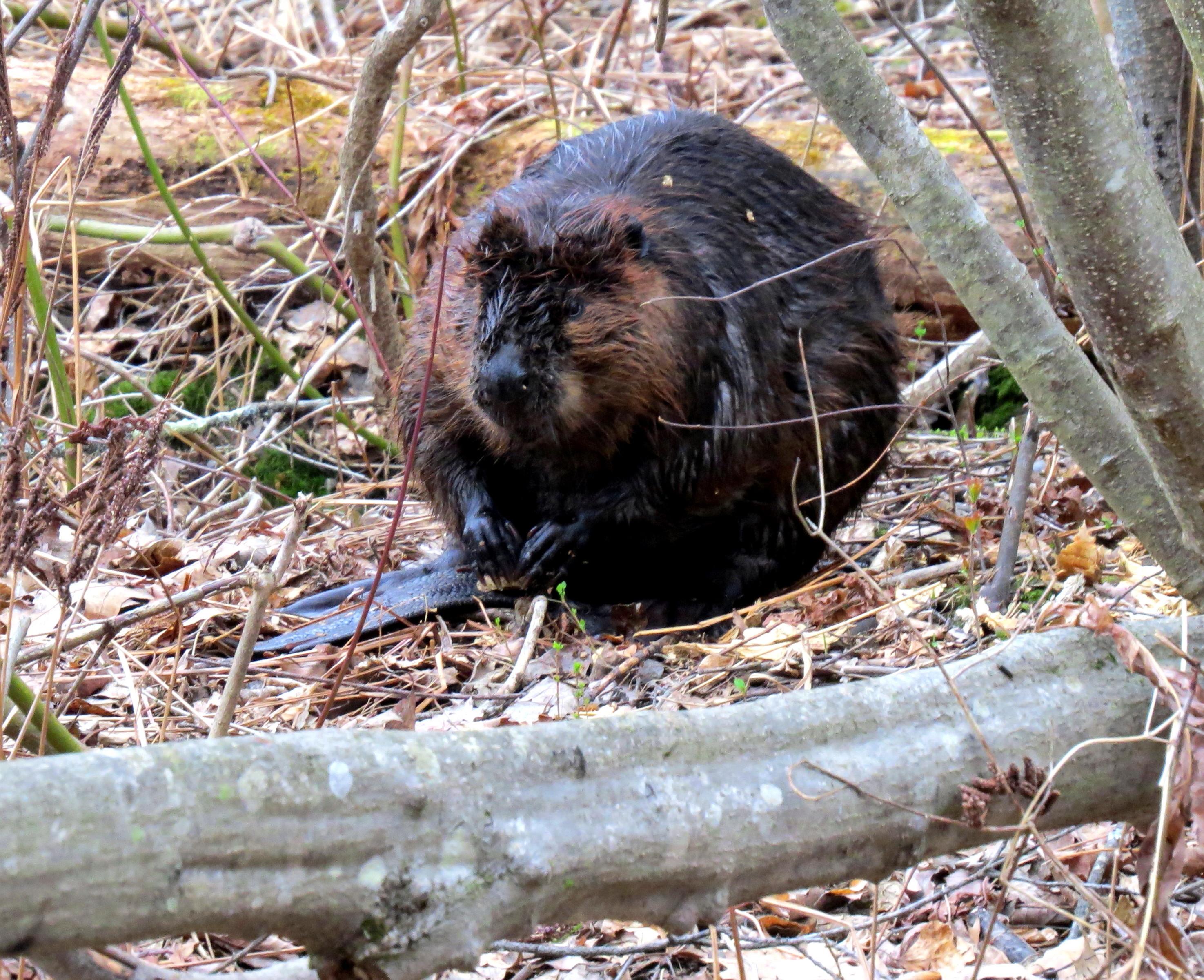
The resident beavers have expanded their activity higher up the Mill Brook and springtime high water and flooding from recent rains provides greater access to food resources. Beavers work to repair dams and lodges while continuing to feed on the green inner bark or cambium of hardwood trees.
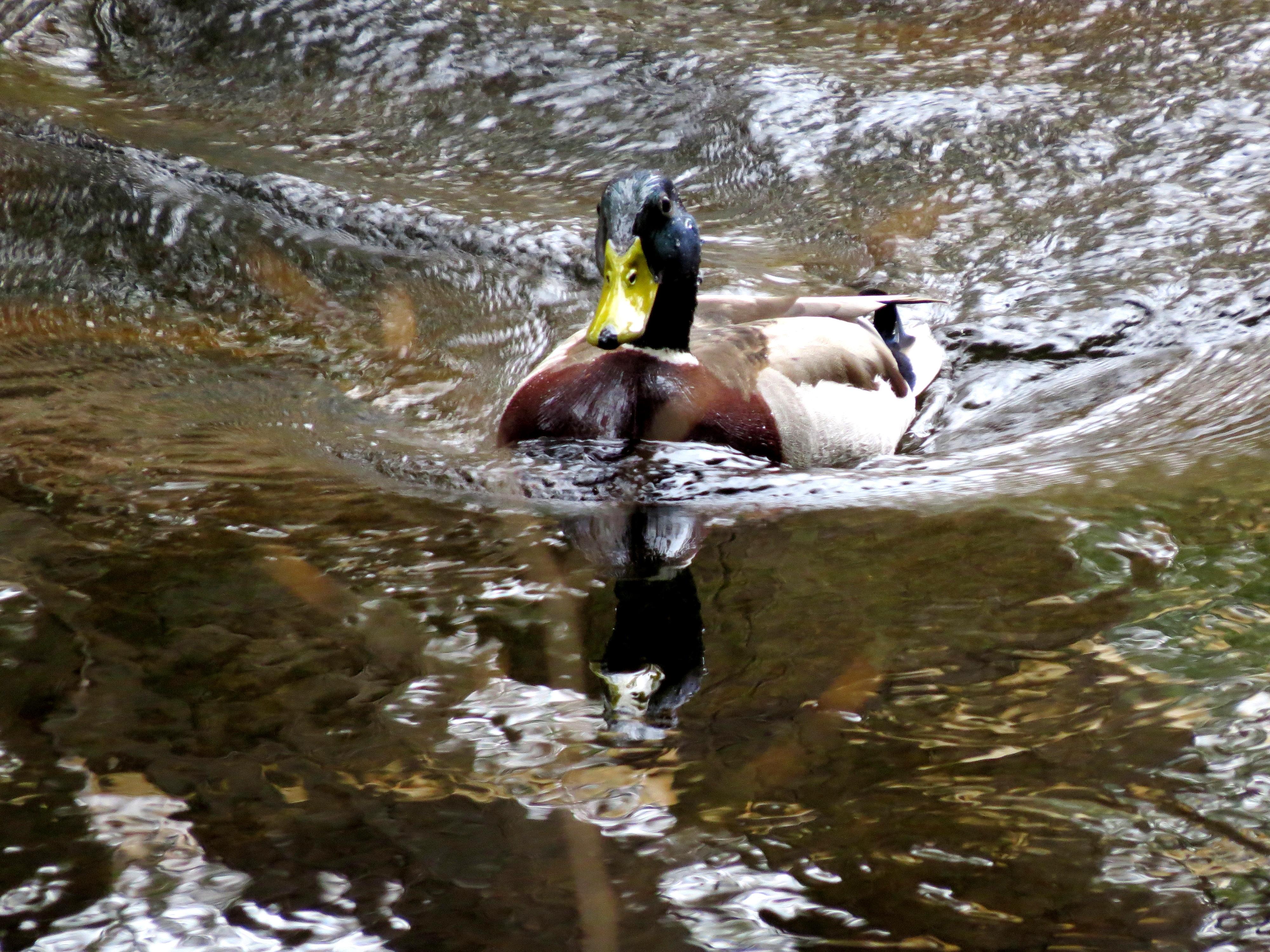
Muskrats feed on the segmented stems of horsetail-rushes which grow in the sandy floodplain soil and at the base of the steep banks of the bluff overlooking the Merrimack River.
Porcupines are an arboreal species. When high water rises, they retreat to the tree tops along the Merrimack. Porcupines eat the tender green buds of emerging red maple and silver maple foliage and munch the tender green canes of understory plants including greenbriar and raspberries.
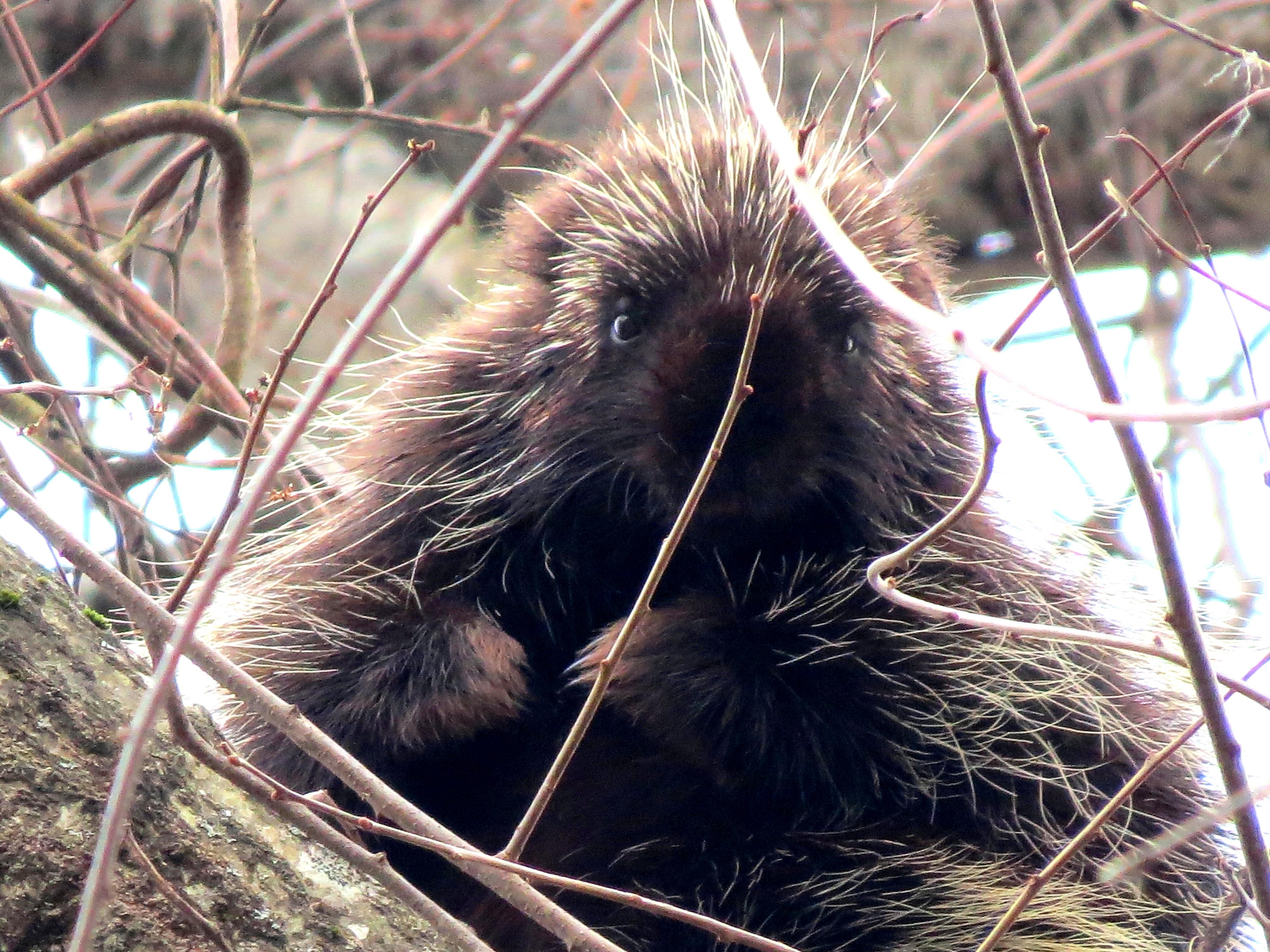
The silver maple floodplain forest is specifically adapted to withstand the extreme flooding regime of the larger rivers in NH- the lower floodplains of the Connecticut River, Saco River and Merrimack River all feature silver maple forests. The high water mark waterline is obvious on the trunks. Above the high water, lichens festoon the trunks.
Below the waterline, mosses dominate the trunk. The highwater flooding may reach 10-15 feet deep in the lowest shelf of silver maples growing in the silty and sandy sediments at the outlet of Mill Brook. The Eastman Cove wetland itself is a former Merrimack River channel which now funtions as an oxbow pond.
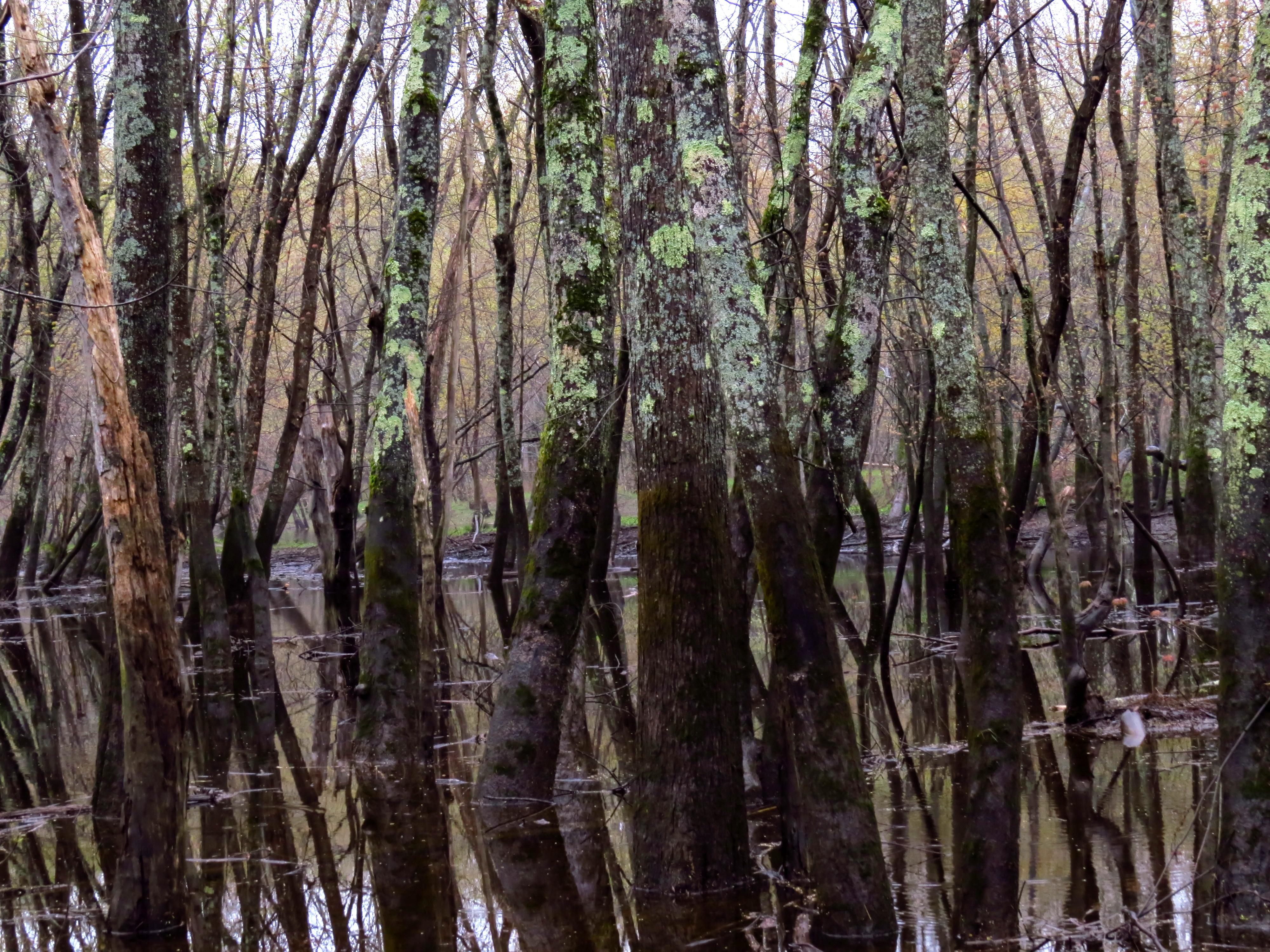
Temporarily flooded forests provide outstanding wildlife habitat opportunities for resident rodents and migratory waterfowl living along the Merrimack River - even during several the recent flooding events.
As the name suggests, floodplain forests and wildlife adapted to living there, high water from spring snowmelt and heavy rains in April are business as usual.
